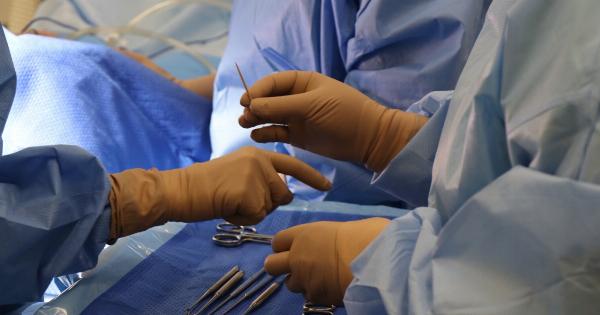Blepharoplasty, commonly known as eyelid surgery, has come a long way in recent years. What was once a complex and invasive procedure has now transformed into a bloodless, painless, and precise treatment option.
Advancements in technology and surgical techniques have revolutionized the field, making eyelid surgery safer and more effective than ever before.
Traditional Blepharoplasty: Invasiveness and Limitations
Traditional blepharoplasty, which involved making incisions on the eyelids and removing excess tissue, was a major surgery associated with significant downtime and potential complications.
This invasive procedure could result in bleeding, bruising, scarring, and prolonged discomfort for patients.
While traditional blepharoplasty yielded good outcomes, the invasiveness of the procedure made it less appealing to some patients who were seeking a more conservative approach.
The desire for an alternative led to the development of minimally invasive techniques.
Minimally Invasive Blepharoplasty: A Game-Changer
Minimally invasive techniques have revolutionized the field of blepharoplasty, offering patients a safer and more comfortable experience with reduced downtime.
These innovative approaches employ state-of-the-art tools and advanced surgical techniques, allowing for bloodless, painless, and precise eyelid rejuvenation.
Endoscopic Blepharoplasty: Precision through a Microscopic Lens
One of the most significant advancements in blepharoplasty is the introduction of endoscopic techniques.
Endoscopic blepharoplasty utilizes a tiny camera and specialized instruments inserted through small incisions, allowing surgeons to visualize and manipulate the tissues with unprecedented precision.
The use of an endoscope provides surgeons with a magnified view of the underlying structures, enabling them to remove fat deposits, reposition muscles, and tighten the skin more accurately.
This microscopic approach reduces the risk of scarring, infection, and damage to surrounding tissues, leading to faster healing and superior aesthetic outcomes.
Laser Blepharoplasty: Bloodless and Scarless Surgery
Another breakthrough in blepharoplasty is the utilization of laser technology. Laser blepharoplasty involves using a laser to make precise incisions and remove excess skin and fat without the need for traditional surgical instruments.
This bloodless technique minimizes bleeding and bruising and reduces the risk of complications.
Furthermore, the high-energy laser stimulates collagen production, promoting skin tightening and reducing the appearance of wrinkles.
Laser blepharoplasty offers a more youthful and vibrant appearance without the visible scarring associated with conventional surgery.
Non-Surgical Blepharoplasty: The Rise of Injectables
In recent years, non-surgical options have emerged as an alternative to surgical blepharoplasty.
Injectables, such as dermal fillers and neuromodulators, have gained popularity for their ability to rejuvenate the eye area without any incisions or downtime.
Dermal fillers, typically made of hyaluronic acid, can restore volume and smoothen the hollows and wrinkles around the eyes. Neuromodulators, such as Botox, can relax the muscles that cause crow’s feet and other dynamic wrinkles.
While non-surgical blepharoplasty may not provide the same long-lasting results as surgery, it offers a convenient and less invasive option for those who prefer a subtle enhancement or who are not ready for a surgical procedure.
Robot-Assisted Blepharoplasty: The Future is Here
As technology continues to evolve, robot-assisted blepharoplasty holds promise for the future of eyelid surgery.
Robotic systems offer precise and controlled movements, reducing the risk of human error and enabling surgeons to perform complex procedures with greater accuracy.
With the assistance of robots, surgeons can navigate the delicate anatomy of the eyelids with heightened dexterity. Robotic instruments can be equipped with advanced imaging capabilities, providing real-time feedback and enhancing surgical outcomes.
While robot-assisted blepharoplasty is still a developing field, it has the potential to further revolutionize the procedure by improving safety, precision, and efficiency.
As technology continues to advance, robotic systems may become a valuable tool for blepharoplasty surgeons.
The Future of Blepharoplasty: Bloodless, Painless, and Precise
Blepharoplasty has come a long way since its inception, thanks to numerous advancements in technology and surgical techniques.
The future of eyelid surgery is focused on providing patients with bloodless, painless, and precise procedures that yield natural-looking results with minimal downtime.
While traditional blepharoplasty is still an effective option for certain patients, the rise of minimally invasive techniques, such as endoscopic and laser blepharoplasty, has transformed the field.
These approaches offer unparalleled precision, reduced invasiveness, and faster recovery, while maintaining exceptional aesthetic outcomes.
Additionally, non-surgical blepharoplasty with injectables provides a viable alternative for those seeking temporary improvements without any incisions or recovery time.
Looking ahead, robot-assisted blepharoplasty may become more prevalent, ushering in a new era of technology-driven precision and efficiency within the field.
As advancements continue, the future of blepharoplasty looks bright, promising ever-improving results and patient satisfaction.

























